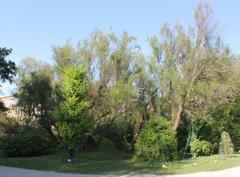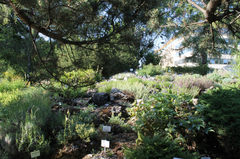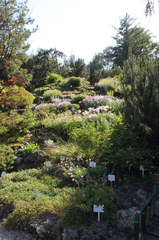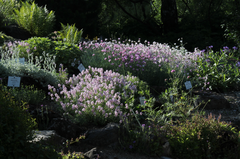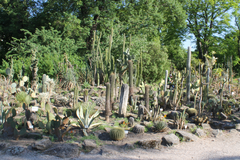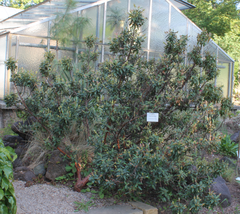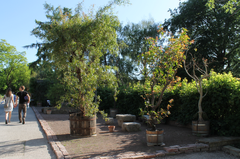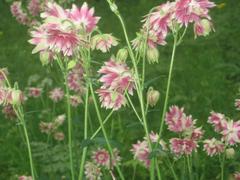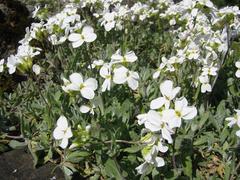
Botanical Garden of the University of Vienna: Visiting Hours, Tickets, and Complete Visitor Guide
Publication Date: 14/06/2025
Introduction
The Botanical Garden of the University of Vienna is a living monument to centuries of scientific inquiry, cultural heritage, and natural beauty. Founded in 1754 during the Habsburg era, it remains at the forefront of botanical research, conservation, and public education. Today, the garden encompasses over 8 hectares and contains approximately 11,000 plant species from around the globe, serving as both a hub for scientific advancement and an accessible oasis in Vienna’s urban landscape.
Located adjacent to the Belvedere Palace, the garden provides a serene escape for locals, tourists, researchers, and families. Its thematic zones—from alpine flora to tropical greenhouses—invite exploration, while educational programs and guided tours foster environmental awareness and appreciation for Vienna’s botanical legacy. Admission is free, and comprehensive visitor facilities ensure a welcoming experience for all. For the latest details on visiting hours, ticketing, and events, consult the official Botanical Garden website and Wikipedia.
Contents
- Introduction
- Historical Overview and Scientific Significance
- Research, Conservation, and Education
- Garden Layout and Plant Collections
- Visitor Information: Hours, Tickets, and Accessibility
- Highlights and Unique Experiences
- Travel Tips and Nearby Attractions
- Frequently Asked Questions (FAQ)
- Conclusion and Essential Visitor Tips
- Sources and Further Reading
Historical Overview and Scientific Significance
Founding and Early Development
Established during the reign of Empress Maria Theresa, the garden was envisioned as a research and teaching facility rather than a decorative park. Its creation marked Vienna’s emergence as a center of botanical science, complementing the imperial collections at Schönbrunn and the Natural History Museum (Historical Botanical Gardens). Over the centuries, the garden has supported pivotal research in plant taxonomy, physiology, and ecology, and facilitated the exchange of plant species worldwide.
Scientific Contributions
The Botanical Garden’s impact extends far beyond its borders. It has played a critical role in:
- Taxonomic Research: Supporting the classification and study of plant diversity.
- Conservation Biology: Preserving rare and endangered species as part of international conservation networks (ScienceDirect).
- Ecological Studies: Providing diverse habitats for research on plant adaptation and climate resilience.
- Medicinal Plant Research: Supporting pharmacological and ethnobotanical studies.
The garden’s living collections and research infrastructure have shaped the careers of renowned botanists and contributed significantly to global botanical knowledge (Springer, Botany Journals).
Research, Conservation, and Education
Conservation Initiatives
As a member of global plant conservation efforts, the Botanical Garden cultivates ex-situ populations of threatened species, participates in seed exchange programs, and provides genetic resources for restoration projects (ScienceDirect). Its collections act as a living gene bank, safeguarding biodiversity for future generations.
Education and Public Engagement
The garden is deeply committed to public education. It offers:
- Guided Tours: Led by expert botanists, these tours provide insight into plant diversity, research, and conservation.
- Workshops and Courses: Including programs from the Vienna School of Botanical Illustration, where visitors can learn scientific drawing and botanical art.
- Citizen Science Initiatives: Enabling the public to participate in ongoing research and ecological monitoring.
- Interpretive Signage: Making scientific concepts accessible to all visitors (Garden Regulations).
Garden Layout and Plant Collections
Main Zones and Pathways
The garden’s design harmoniously blends historic landscape architecture with modern thematic and systematic displays. Visitors can explore:
- Systematic Beds: Plants arranged by evolutionary relationships, aiding in educational outreach.
- Geographical Sections: Featuring native flora from Austria’s Pannonian steppe, alpine regions, Mediterranean, and global zones.
- Specialized Collections: Including succulents, medicinal and useful plants, and rare or endangered species.
- Greenhouses: One is open to the public, showcasing a permanent rainforest exhibition and rare tropical plants.
Notable Specimens and Features
- Ancient Trees: Some trees date back to the mid-18th century.
- Rainforest Greenhouse: Offers a unique opportunity to experience tropical biodiversity.
- Alpine and Pannonian Gardens: Highlight regional plant adaptations.
Plant labels, QR codes, and information boards provide scientific and common names and further details on each collection (Secret Attractions).
Visitor Information: Hours, Tickets, and Accessibility
Opening Hours
- April to September: 10:00 AM – 6:00 PM
- October, February, March: 10:00 AM – 5:00 PM
- November, December, January: 10:00 AM – 4:00 PM
- Closed: December 24 to January 6, and during inclement weather
- Always verify current hours on the official website.
Admission and Tickets
- Entry: Free of charge for all visitors
- Guided Tours and Special Events: May require advance booking or a participation fee
Accessibility and Facilities
- Entrances: Main entrance at Mechelgasse, secondary at the Upper Belvedere
- Wheelchair Accessibility: Most paths are flat and paved; some areas have gravel or uneven surfaces
- Restrooms: Available near the main entrance
- Seating: Benches and shaded areas throughout
- Café: None on-site, but numerous options are nearby
Getting There
- Address: Rennweg 14, 1030 Vienna, Austria
- Public Transport: Tram 71 (Unteres Belvedere), trams D and 71, and buses 4A and 74A
- Parking: Limited; public garages nearby
- Bicycle Parking: Available on-site
Highlights and Unique Experiences
Art and Botanical Illustration
The garden is renowned for its tradition of botanical illustration, hosting exhibitions and offering courses for visitors interested in art and science. Notable artists and the Vienna School of Botanical Illustration contribute to ongoing workshops and events.
Special Events and Educational Activities
- Workshops and Family Programs: Cover topics from plant identification to sustainable gardening.
- Seasonal Events: Flower exhibitions, plant fairs, and art installations.
- Photography: The gardens are especially photogenic during spring and early summer.
Conservation and Sustainability
Learn about the garden’s role in urban ecology, biodiversity research, and climate resilience through interpretive signage and educational programs.
Travel Tips and Nearby Attractions
- Best Visiting Times: Spring and early summer for floral displays; autumn for vibrant foliage.
- Combine Your Visit: Explore nearby sites such as the Belvedere Palace, Stadtpark, and Palais Schwarzenberg. The garden is part of Vienna’s largest inner-city green space, connecting with surrounding parks (Trek.zone).
- Visitor Etiquette: Stay on marked paths, do not pick plants, and respect posted guidelines.
Frequently Asked Questions (FAQ)
Q: Is there an entry fee?
A: No, entry is free for all visitors.
Q: What are the current opening hours?
A: Hours vary by season; see above and check the official website for updates.
Q: Are pets allowed?
A: No, except for service animals, to protect plant collections.
Q: Is the garden suitable for children and families?
A: Yes, with educational programs and family-friendly facilities.
Q: Are guided tours available?
A: Yes, and advance booking is recommended for tours and workshops.
Q: Is the garden wheelchair accessible?
A: Most areas are accessible, though some paths may be uneven.
Q: Are there food facilities on site?
A: No, but many options are located in the surrounding Belvedere area.
Conclusion and Essential Visitor Tips
The Botanical Garden of the University of Vienna stands as a testament to Vienna’s enduring commitment to science, culture, and sustainability. With its free admission, rich living collections, and inclusive educational programs, the garden is a must-visit destination for anyone seeking tranquility, knowledge, and a deeper connection with nature in the heart of Vienna.
Visitor Tips:
- Check the official website for up-to-date information on hours and events.
- Download the Audiala app for guided audio tours and interactive maps.
- Combine your visit with nearby historical sites for a full cultural experience.
- Follow the garden on social media for the latest updates and event announcements.
For further insights and travel suggestions, see resources on Vienna’s historical sites and nature escapes.
Sources and Further Reading
- Historical Botanical Gardens
- Springer
- Botany Journals
- ScienceDirect
- Botanical Garden of the University of Vienna Official Website
- Trek.zone
- Wikipedia
- GardenVisit
- Secret Attractions
